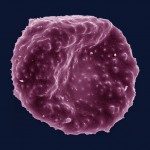About
During the past year, using a murine model for experimental cerebral malaria (ECM), we pursued our investigation regarding the contribution of the allergic inflammatory response in the pathogenesis of malaria disease. Following the demonstration of the critical role of the IgE/FceRI complex and the identification of neutrophils as key factors for the disease severity, we went on by identifying a parasite gene product, the Histamine Releasing Factor (HRF), secreted by P. berghei parasites. In this work, we showed that development of P. berghei liver stage lacking HRF, but not blood-stage, was delayed and was associated with an early rise in systemic IL-6, a cytokine that apparently suppresses development of Plasmodium liver stages. The defect is rescued by injection of anti-IL-6 antibodies or infection in IL-6-deficient mice and parasite HRF was sufficient to decrease IL-6 synthesis, indicating a direct role of parasite HRF in reducing host IL-6. Our data support a role for HRF in the down-regulation of a cytokine with anti-parasite activity. In parallel, and in collaboration with Catherine Vaquero and Sylvie Briquet (CIMI,-Paris Sorbonne Université, Inserm U1135, CNRS ERL 8255), we examined the role of another parasite gene which encodes a highly pro-inflammatory protein termed High Mobility Group Box (HMGB), also secreted by P. berghei parasites. The pathogenesis of ECM was suppressed in C57BL/6 mice infected with PbANKA when its hmgb2 gene was deleted by homologous recombination, an effect associated with reduction of histological brain lesions and expression of several pro-inflammatory genes involved in the pathogenesis of ECM, leading to mouse survival. Altogether these data support the concept that the severity of the pathology results primarily from an inflammatory disease.

